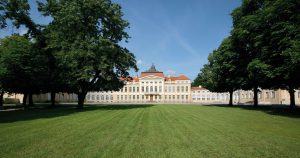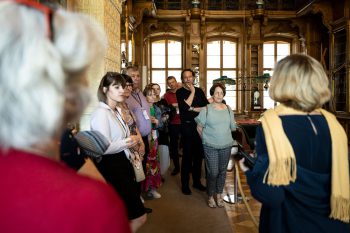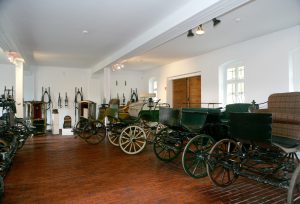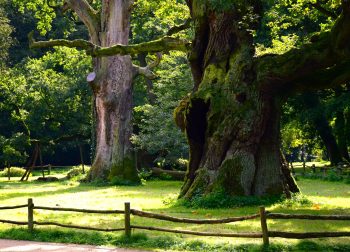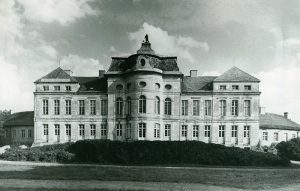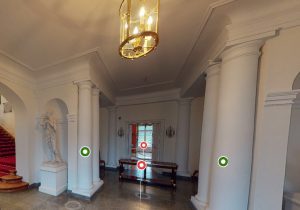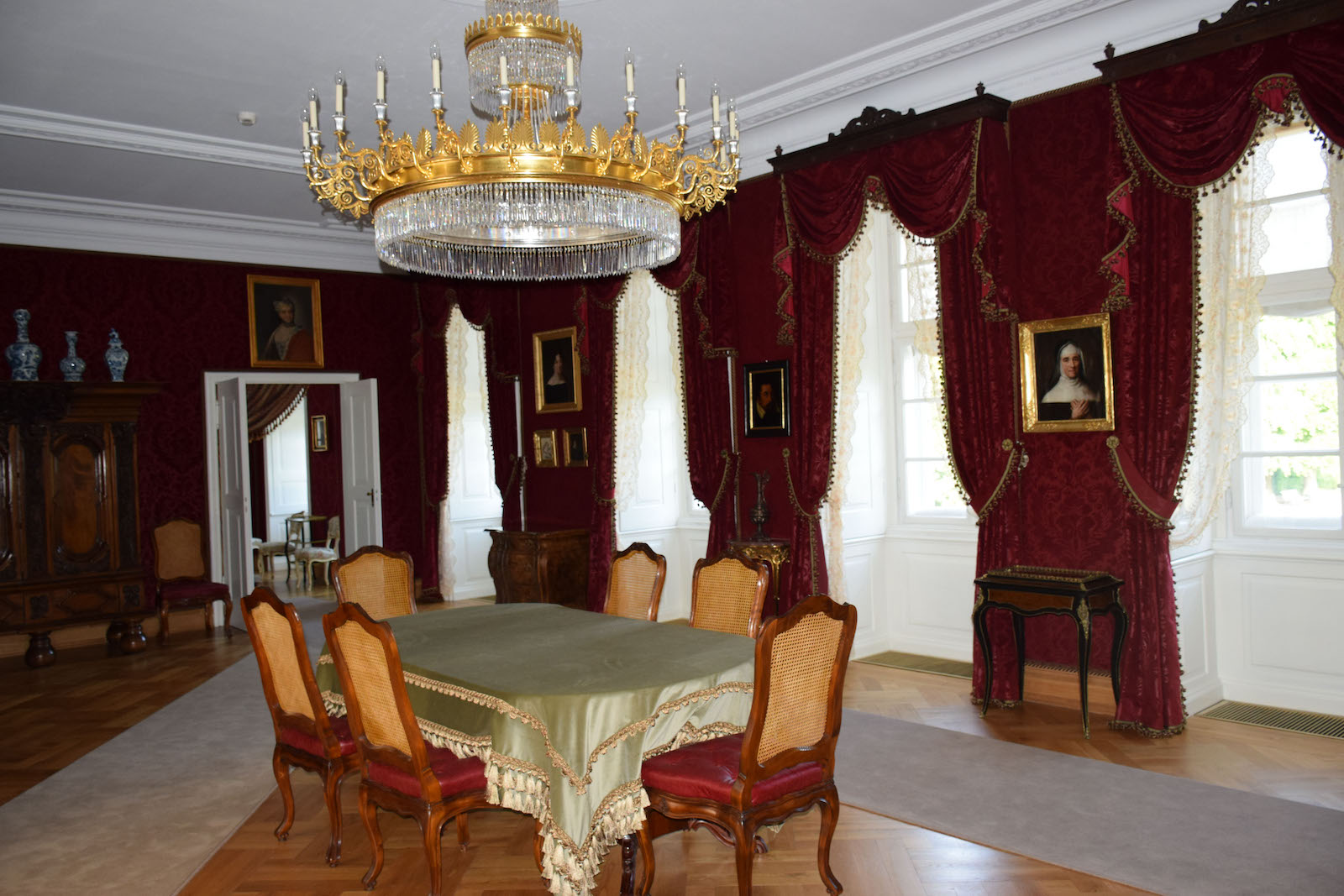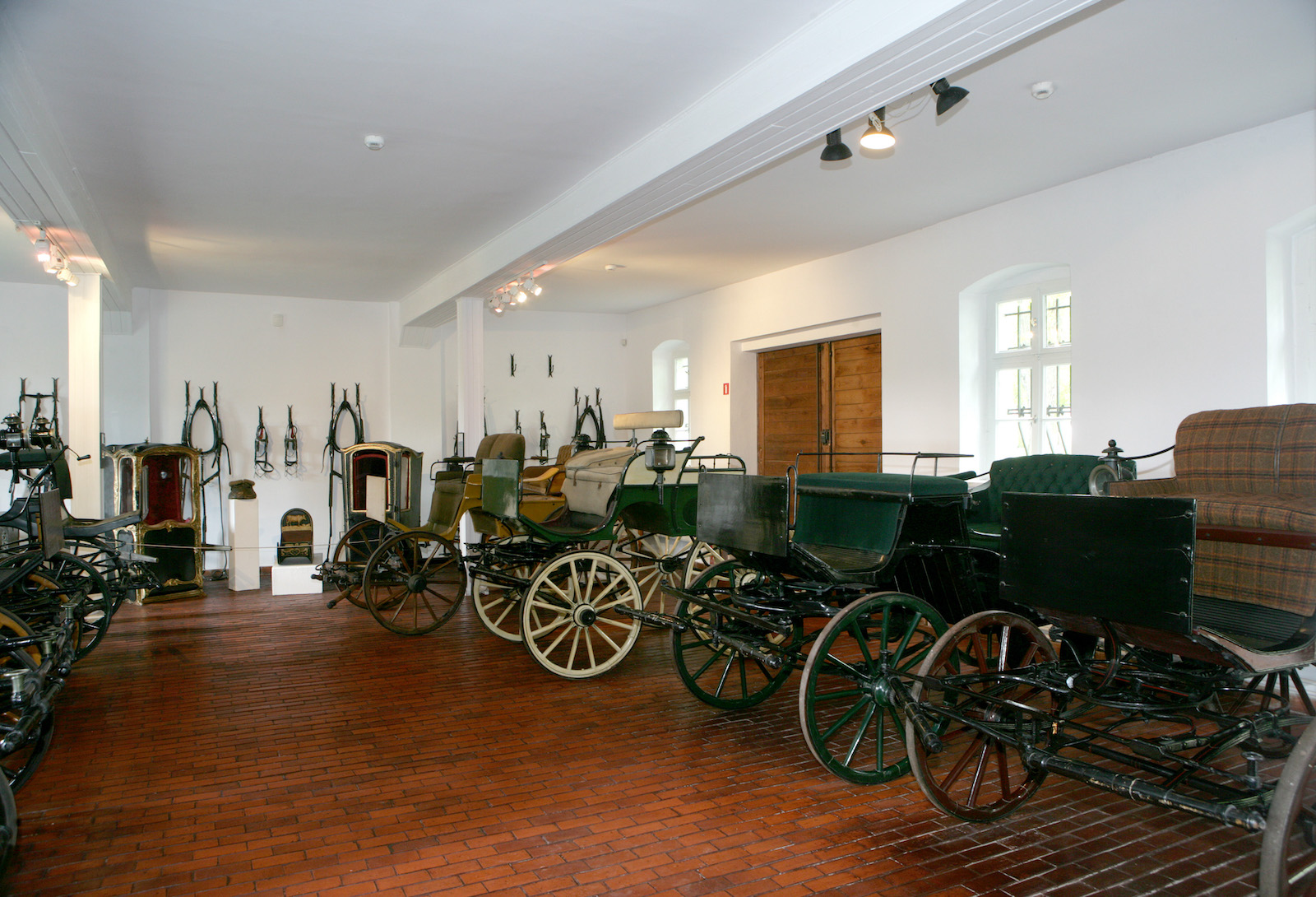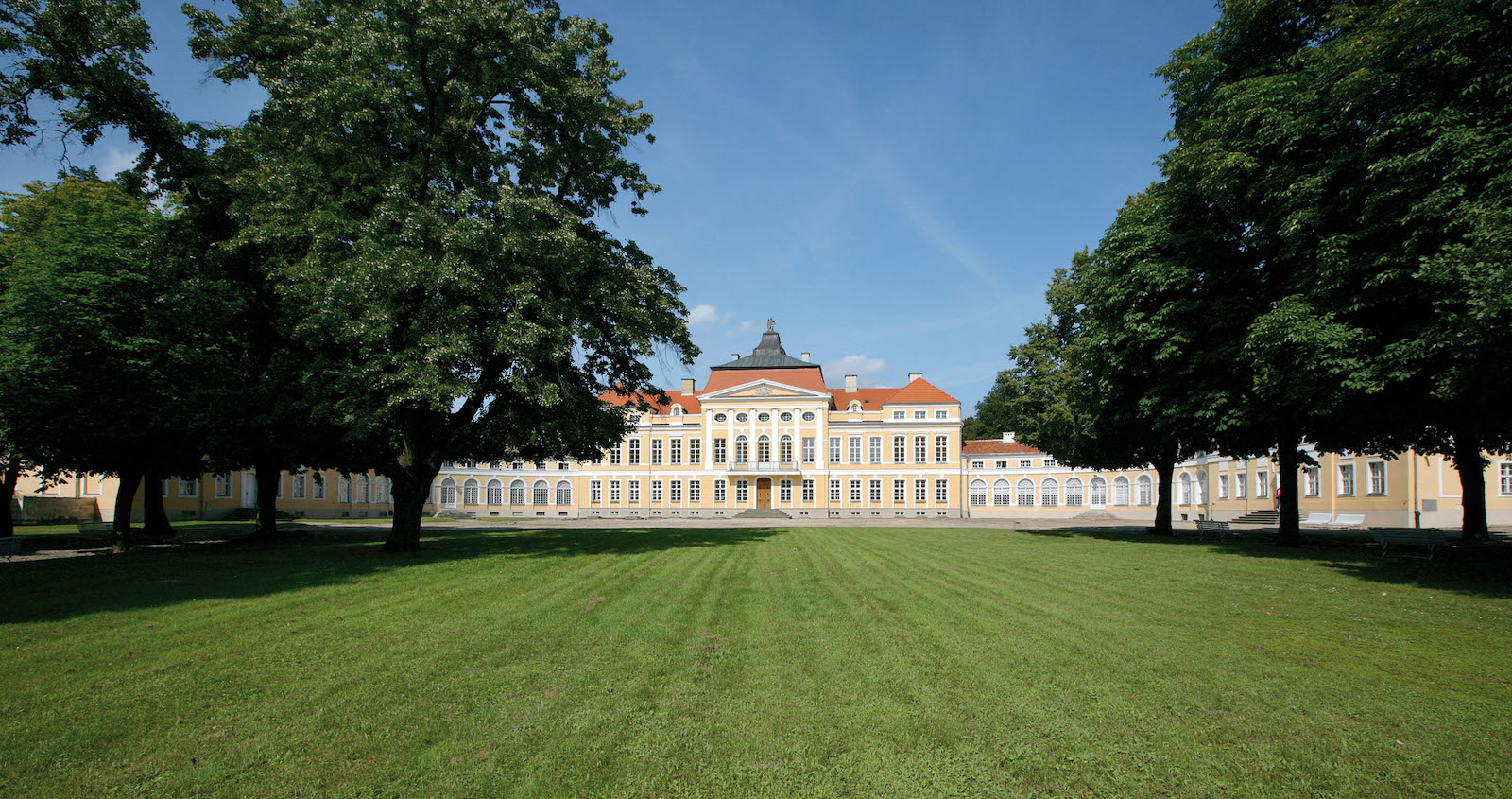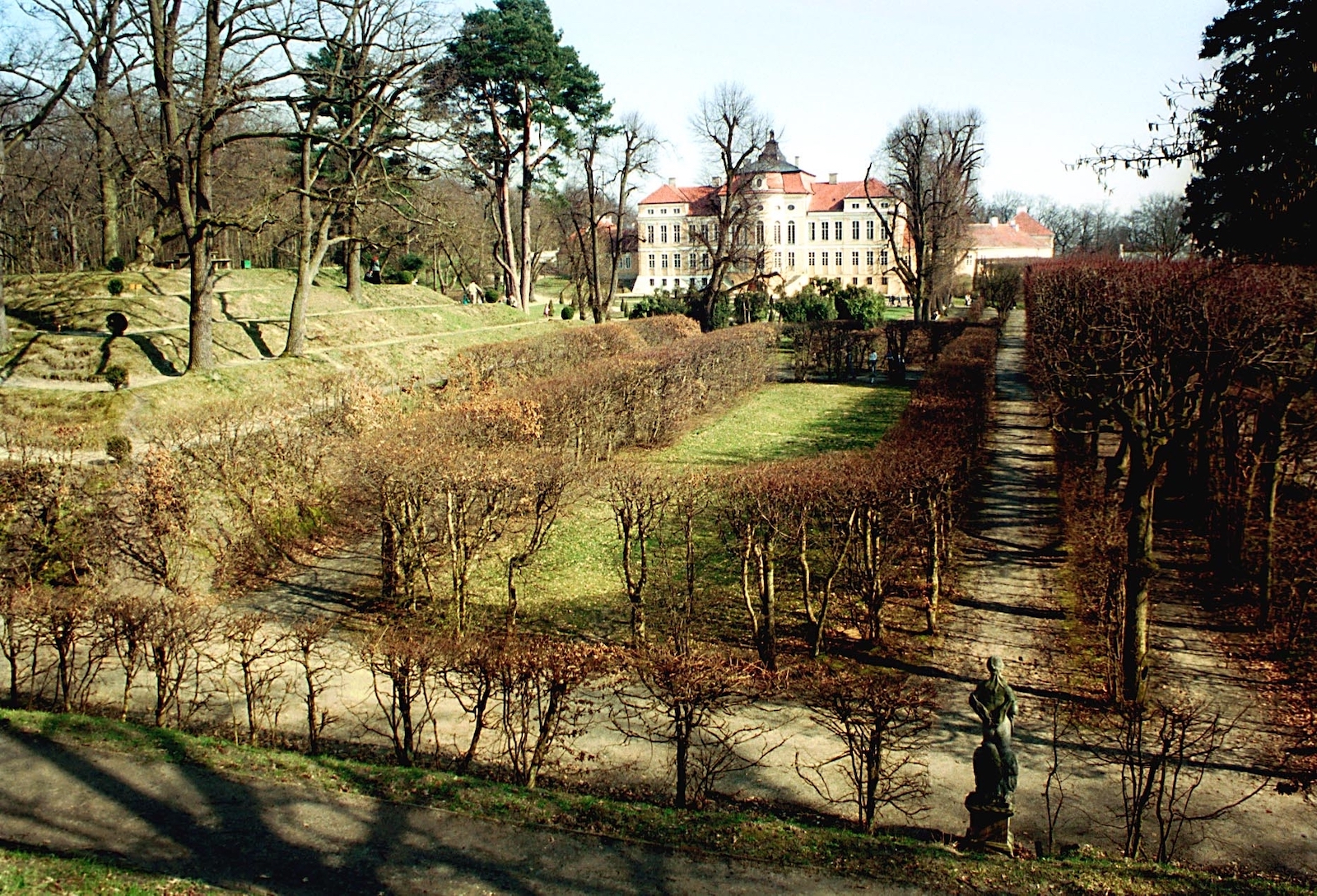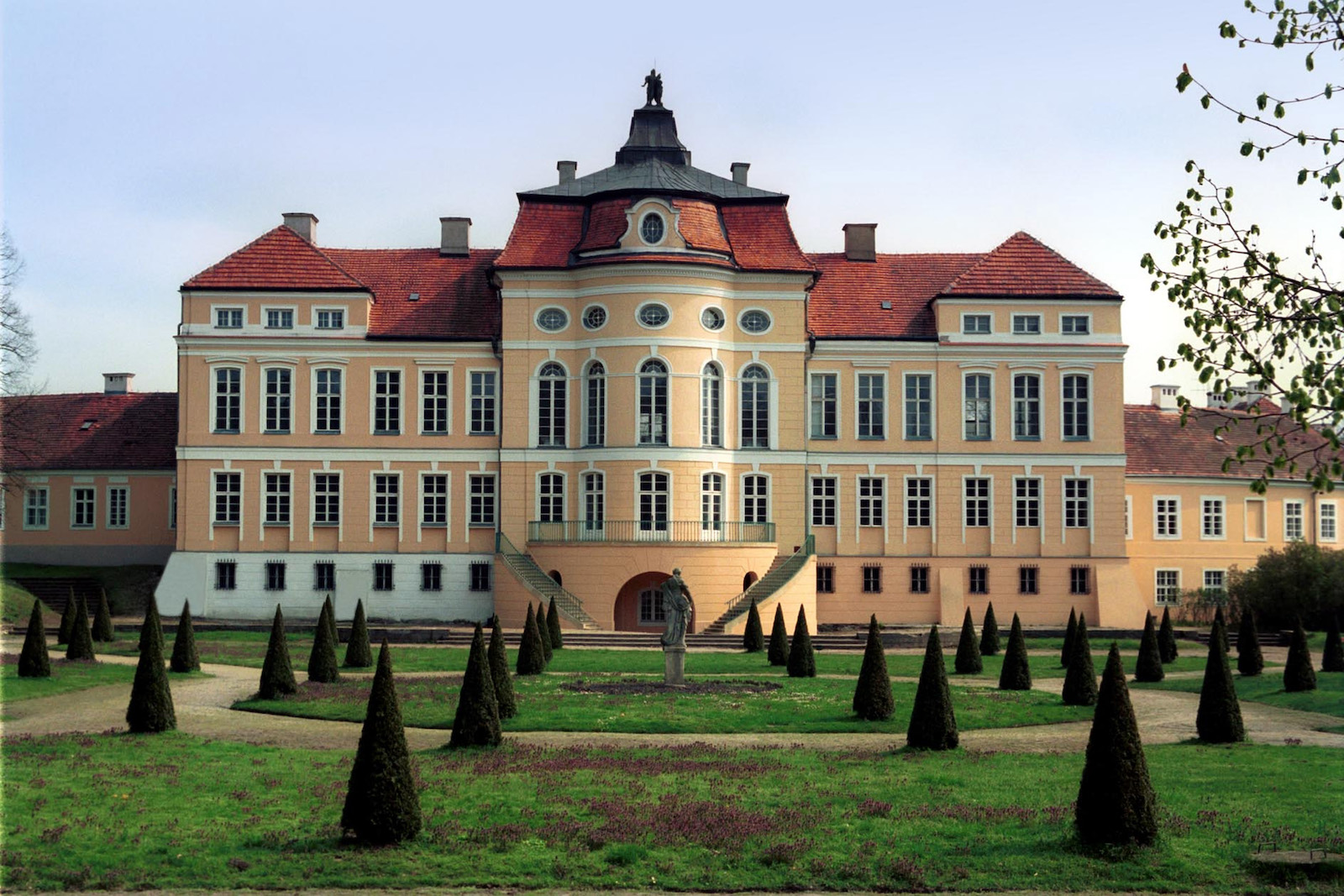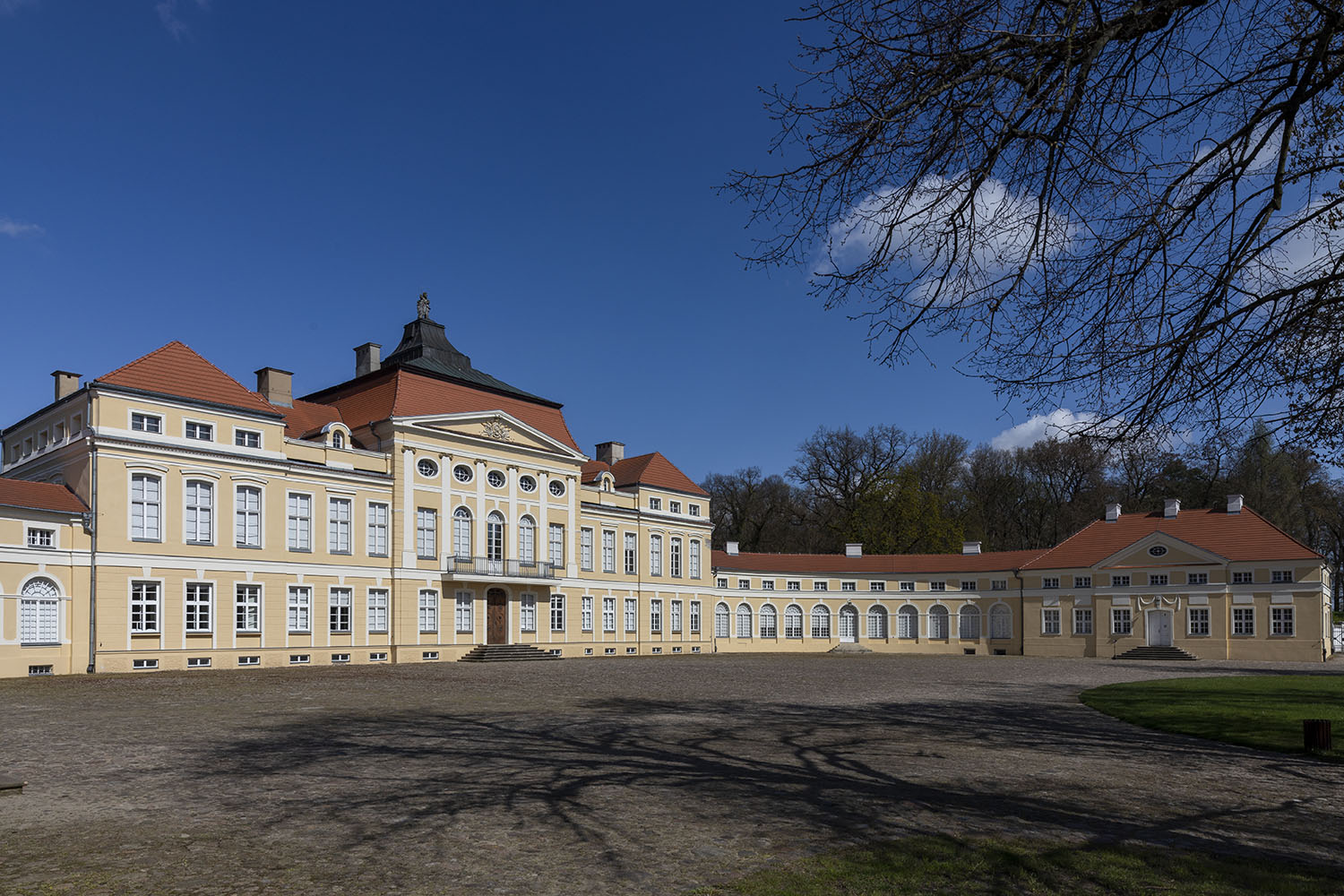History
The Rogalin Museum was created in 1948 in the former seat of the Raczynski family. Its origins date back to the 70s of the 18th century, when Kazimierz Raczynski, then Grand Crown Writer, later Starosta General of Greater Poland, President of the Good Order Commission and Marshal of the Crown Court, erected an impressive residential complex here. Its picturesque location on the vast Warta Valley and its proximity to Poznan, with which the founder was actively involved in public activities, determined the choice of Rogalin.
Palace in the 18th century
The residence, considered one of the most valuable in Poland, was built between 1770 and 1776 according to the project of an unknown creator from the circle of royal architects. Maintained in the Baroque concept “between the courtyard and the garden”, it also has Rococo and early Classicism features. From the beginning it was an important center of social, political and cultural life, a place of shaping artistic taste and a policy supporting the reformist plans of Stanisław August Poniatowski.
In the 80s of the 18th century, a neoclassical modernization of the palace was initiated, based on the projects of two royal architects, Dominik Merlini and Jan Christian Kamsetzer. The works were interrupted by the premature death of Kazimierz Michalina’s daughter, whom he named as the next owner of the residence due to the lack of sons. By marrying her to his cousin Filip Raczyński, he ensured that Rogalin remained in the hands of his family.
Palace in the 19th century
In 1801, Filip returned to the modernization project, in which the stables and coachhouses still had an Empire-style character, demonstrating their dependence on the work of Berlin architects.
Since 1815, the work was continued by his son Edward, the third Lord of Rogalin. In the conditions of lost independence, he turned the ballroom into a romantic, neo-Gothic Armory, which he equipped with old Polish armaments and national souvenirs. The representative interiors leading to it were dressed in Empire decoration, showing dependence on both Kamsetzer’s old projects and contemporary Polish implementations. His merit was also the establishment of a naturalistic landscape park with the oldest Rogalin oaks and a church-mausoleum from 1820. This is a copy of the famous ancient temple Maison Carée in Nîmes, which in the basement contains a pseudo-medieval crypt decorated with numerous burials of the Raczyński family. During Edward’s and his wife Konstancja’s time from the Potocki family, the palace was often visited by eminent guests and friends, such as Julian Ursyn Niemcewicz or Adam Mickiewicz.
At the turn of the 19th and 20th centuries
In the late 19th century, during the time of Edward Aleksander Raczyński and his wife Róża from the Potocki family, the palace underwent a thorough renovation overseen by the young Krakow architect Zygmunt Hendel. He was also commissioned to transform the former banquet hall into a neo-rococo library designed to accommodate several thousand books on art that Raczyński had collected as an outstanding collector and for many years the President of the Krakow Society of Fine Arts.
In his actions, he also referred to the collecting traditions started by his grandfather Edward’s Armory, which was actually the first museum chamber in Greater Poland, or the first such modern one on Polish lands, the Atanazy Raczyński Gallery in Poznań, built in 1829 next to the public library of his brother – Edward. Thus, in 1910 he built a publicly accessible gallery, in which he placed an excellent collection of contemporary Polish and foreign painting, numbering nearly 500 works of art. The building designed by Poznań architect Mieczysław Powidzki, kept in the style of straight line secession, refers to medieval sacral architecture. This makes it a modernist temple of art, perfectly harmonizing with the collections exhibited in it.
Among the numerous guests looking in Rogalin at the time were friends of the owners, artists, writers, and social activists such as Jacek Malczewski, Józef Mehoffer, Michał Wywiórski, but also Henryk Sienkiewicz and August Cieszkowski.
The palace from 1918-1939
Nothing changed during the interwar period when the palace, then owned by Roger Raczyński, the Poznań Voivode and the Ambassador of Poland in Romania, was visited by many representatives of politics and culture, including Kajetan Morawski, Kazimiera Iłłakowiczówna, Jerzy Giedroyc, the Primate Hlond and the Ambassador of France at the forefront. Its interior then underwent only minor renovation and arrangement works, thanks to the involvement of Roger’s wife Helena from Rohoziński, which allowed them to adapt the former parade apartment on the floor for their bedrooms and salons. We owe the saving of a large part of the Rogaliński gallery and the collection of the armoury to their efforts, supported by Roger’s brother Edward Bernard, which were hidden in the National Museum in Warsaw in the face of the approaching war.
During World War II
The requisitioning of the almost empty palace as the Hitlerjugend Gebietsführerschule headquarters did not have an effect on its devastation. Apart from the dismantling of the Hendel library equipment and the plowing of the floor of the Rococo garden and the damage to the sculptures there, the Germans did not disturb its substance.
The palace after 1945
In this state in 1945 it was partially inhabited by random tenants, taken as the seat of a primary school, as well as a former carriage house village hall, shop, kindergarten and health center.
After the Museum took over the main part of the palace in 1948, for many years it presented museum collections of artistic crafts and an exhibition dedicated to Krzysztof Arciszewski, born in Rogalin. In the gallery, there were ethnographic collections, eventually replaced by partially recovered Rogalin collections.
The will of the founder of the Foundation and the new political situation in Poland opened the way for a full reconstruction of the residence as a historical Raczyński house. The acquisition of significant funds from Norwegian and EU funds between 2007-2009 and 2013-2015 allowed for the completion of the renovation of the residence that had been ongoing since the 70s of the 20th century and the restoration of its historical interior.
In 2018, the palace complex, and in 2020 the former estate surrounding it, were declared a Historic Monument.
Currently you can visit:
- The interiors of the main part of the palace and its left wing, which reflect the pre-war atmosphere of Rogalin’s house with its furnishings, which have been accumulated since the 18th century until the Second World War. In the southern wing, you can also get acquainted with the collections of paintings of the Kurland line of the Raczyński family, which joined the Foundation in 1997.
- In the right wing of the palace: The Ancestors Gallery of Atanazy Raczyński from Gaj Mały and the London Cabinet, a faithful reconstruction of a room with the original furnishings from Edward Bernard Raczyński’s London apartment, the last male representative of the Greater Poland line of the Raczyński family, the President of the Republic in Exile.
- The Edward Alexander Gallery from 1910, which currently contains close to 300 works from his collection, with the largest canvas of Jan Matejko’s “Maid of Orleans” and a large group of works by Jacek Malczewski, Stanisław Wyspiański, Leon Wyczółkowski, Wojciech Weiss, Teodor Axentowicz and many others, which were set off with works by foreign artists bought by Raczyński during his annual trips to Paris and Munich.
- At the carriage house, one can view horse-drawn vehicles and travel accessories from the turn of the 19th and 20th centuries, alongside 18th-century barouches and children’s sleighs.
- A Rococo garden with a complex spatial structure featuring a viewing mound, earth curtains, alley-like cabinets and corridors, and individual accents of trimmed plants and mythological figurines.
- The landscape park, which surrounds the residence, is naturally connected with the riparian alder bushes and fields of the former estate. The museum currently manages nearly 30 hectares of its former area with its famous oaks – which have been an inspiration for many artists.



